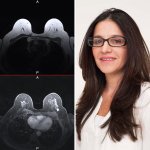
News • Imaging study shows
Breast MRI effective at detecting cancer in dense breasts
Compared to other common supplemental screening methods, breast MRI was superior at detecting breast cancer in women with dense breasts, according to a new study.

Compared to other common supplemental screening methods, breast MRI was superior at detecting breast cancer in women with dense breasts, according to a new study.

Women with high-risk breast lesions (HRLs) and no family history of breast cancer or BRCA mutations are generally considered to be at moderate risk of developing breast cancer. Breast cancer screening guidelines suggest breast MRI be considered as a supplement to mammography. But is this expensive exam necessary?

Cancer – one word that turns the patients’ world upside down. In addition to uncertainty and fear, they often face an unnerving series of exams and treatments. With its new One-Stop Clinic concept, GE Healthcare now wants to help make this journey as smooth as possible. At a single location, in an environment designed for comfort, the patients undergo all necessary steps within a short period…
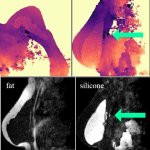
In MRI-based monitoring of silicone implants, separation of silicone and fat tissue is challenging. A newly developed algorithm was designed to assist in the task.
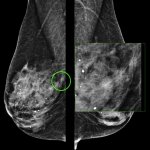
Contrast-enhanced mammography (CEM) has gone a long way since it was first approved by the Food and Drug Administration (FDA) in 2011. An Italian expert explained how useful the modality has become in breast imaging in a dedicated course at ECR 2022.
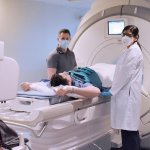
Using functional MRI with inhaled xenon gas, researchers have identified that long COVID symptoms are related to microscopic abnormalities that affect how oxygen is exchanged from the lungs to the red blood cells.

Physicians use AI-powered technology for faster and earlier detection of diseases. At ECR Overture, Dr Steven Schalekamp, PhD, discussed the application of AI for chest radiography in paediatrics.

Contrast-enhanced mammography (CEM) may be a useful alternative test for neoadjuvant therapy (NAT) response assessment in patients with breast cancer who are unable to undergo MRI.
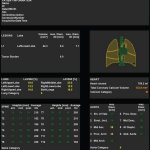
Incorporating AI support into clinical practice can reduce repetitive tasks, saving approximately one hour of chest CT interpretation time in a radiologist’s typical workday.
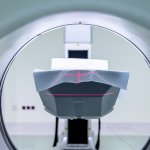
Synthetic correlated diffusion makes cancerous tissue glow in medical images could help doctors more accurately detect and track the progression of cancer over time.
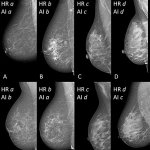
A software based on deep learning with convolutional neural networks can accurately and consistently classify breast density on mammograms according to BI-RADS criteria.

Groundbreaking technologies have improved our ability to accurately diagnose breast cancer and reduce callbacks, focusing on compassionate care for patients as they move along their breast health journey.
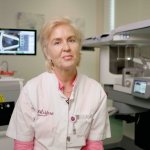
When it comes to your patient’s health, certainty matters. Breast biopsies play a vital role in the continuum of care for women, providing insights into mass and calcification identification so you can make the best-informed decisions.
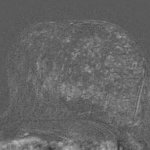
Intrauterine contraceptive devices (IUDs) appear to have systemic effects on the body like those of hormone replacement therapy, according to a breast MRI study being presented at the annual meeting of the Radiological Society of North America (RSNA).

In an effort to promote access to professional breast imaging knowledge, the European Society of Radiology (ESR) now links to educational materials from DenseBreast-info.org as a resource for its members about the screening and risk implications of dense breast tissue.

In the emerging era of personalized medicine, risk-based breast cancer screening protocols may be better than the one-size-fits all approach. It’s time to consider adopting them, Jack Cuzick, Ph.D., said in the President’s Address of the 2021 Society of Breast Imaging/American College of Radiology Breast Imaging Symposium.
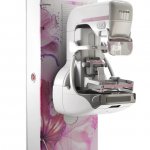
Fujifilm Europe GmbH is launching the new “Harmony” version of its Amulet Innovality mammography system. The “Harmony” version brings together improved diagnostic performance with new design themes to embellish and illuminate your mammography suite, creating an environment to put your patients at ease.

The pandemic has presented healthcare systems with new challenges, resulting in backlogs of routine screenings and delayed procedures which threaten the health and wellbeing of patients, as well as the ability of facilities to serve their communities. In order to address these widespread issues, we need to ensure that healthcare professionals are able to operate with precision, confidence and…

Siemens Healthineers has introduced a new software solution that speeds up the entire reading workflow for breast imaging: Mammovista B.smart. Also new is the Teamplay Mammo Dashboard, a tool for dashboard-based visualization of key performance indicators (KPIs) in the breast imaging process that serves to optimize workflows. With these two new solutions, the company is extending its digital…

MRI is the most sensitive method to detect breast cancer. However, the current breast cancer guidelines for Europe, Germany and Austria, still only recommend it for certain indications: For early detection in high risk patients, for differentiation between scarring and recurrences after breast-conserving treatment and to detect cancers of unknown primary site. This is the theory. However, in…
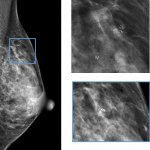
Women with incident and proliferative benign breast diseases (BBD) are likelier to develop breast cancer, a Spanish researcher explained during the 12th European Breast Cancer Conference in October. These findings support the idea of designing personalised breast cancer screening strategies to improve effectiveness.

Hologic, Inc. announced the commercial availability in Europe of its 3DQuorum Imaging Technology, Powered by Genius AI. The innovation was designed to help improve mammography efficiency and workflow, which is critical as clinics strive to manage the backlog of women whose routine breast screening was delayed due to the COVID-19 lockdown.

A French expert in breast imaging looked at the latest Deep Learning (DL) applications in her field, screening their strengths and weaknesses in improving breast cancer detection. It is really important to understand which types of data sets need to be checked when evaluating an AI model for image interpretation, according to Isabelle Thomassin-Naggara, Professor of Radiology at Sorbonne…
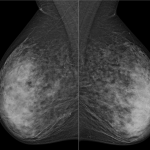
Is mammography still the best method for breast cancer screening? For a number of breast cancers, the latest scientific findings suggest otherwise. For more than a decade, Professor Christiane Kuhl MD, Director of the Clinic for Diagnostic and Interventional Radiology at the University Hospital RWTH Aachen, has researched the use of MRI in breast cancer screening.

The field of AI-enhanced imaging provides radiologists with an unprecedented opportunity to shape patient care, leading Austrian radiologist Katja Pinker-Domenig explained at ECR 2020.